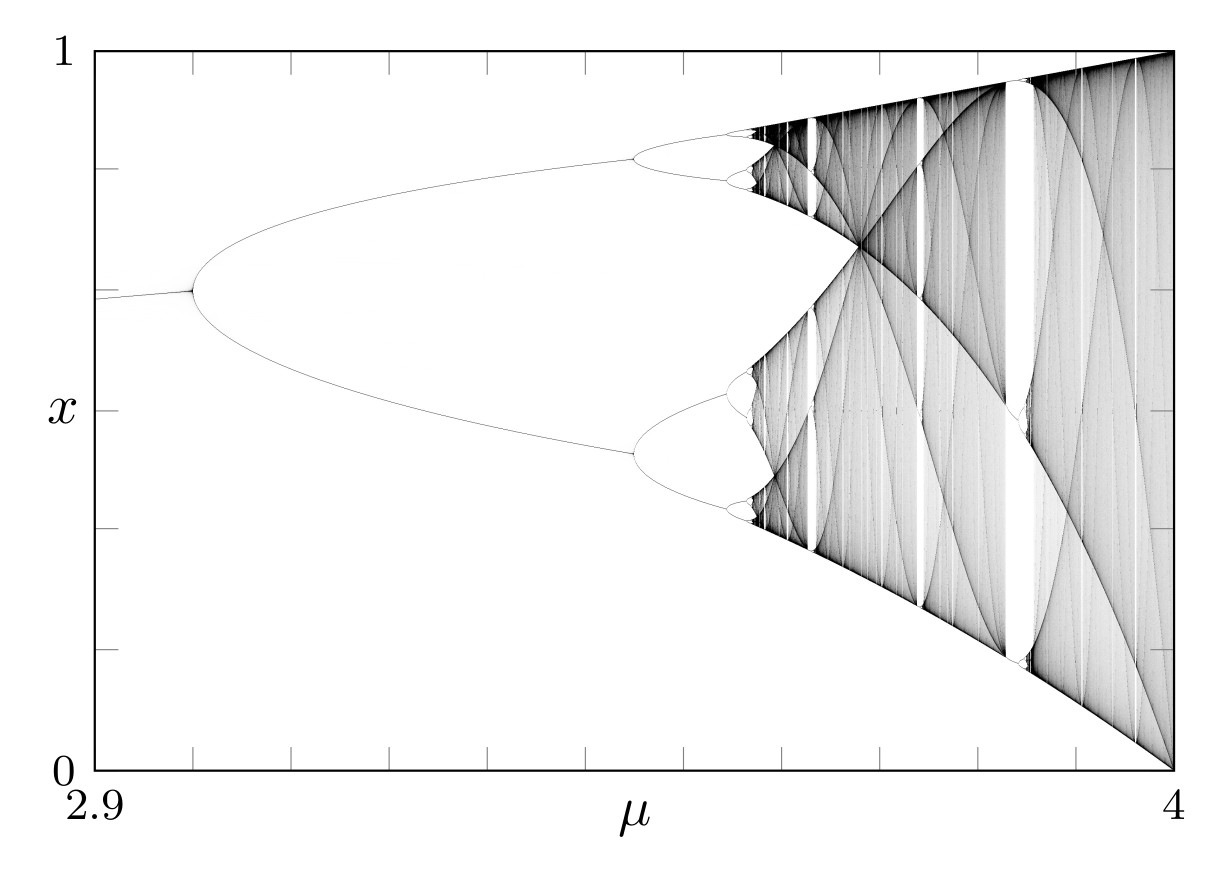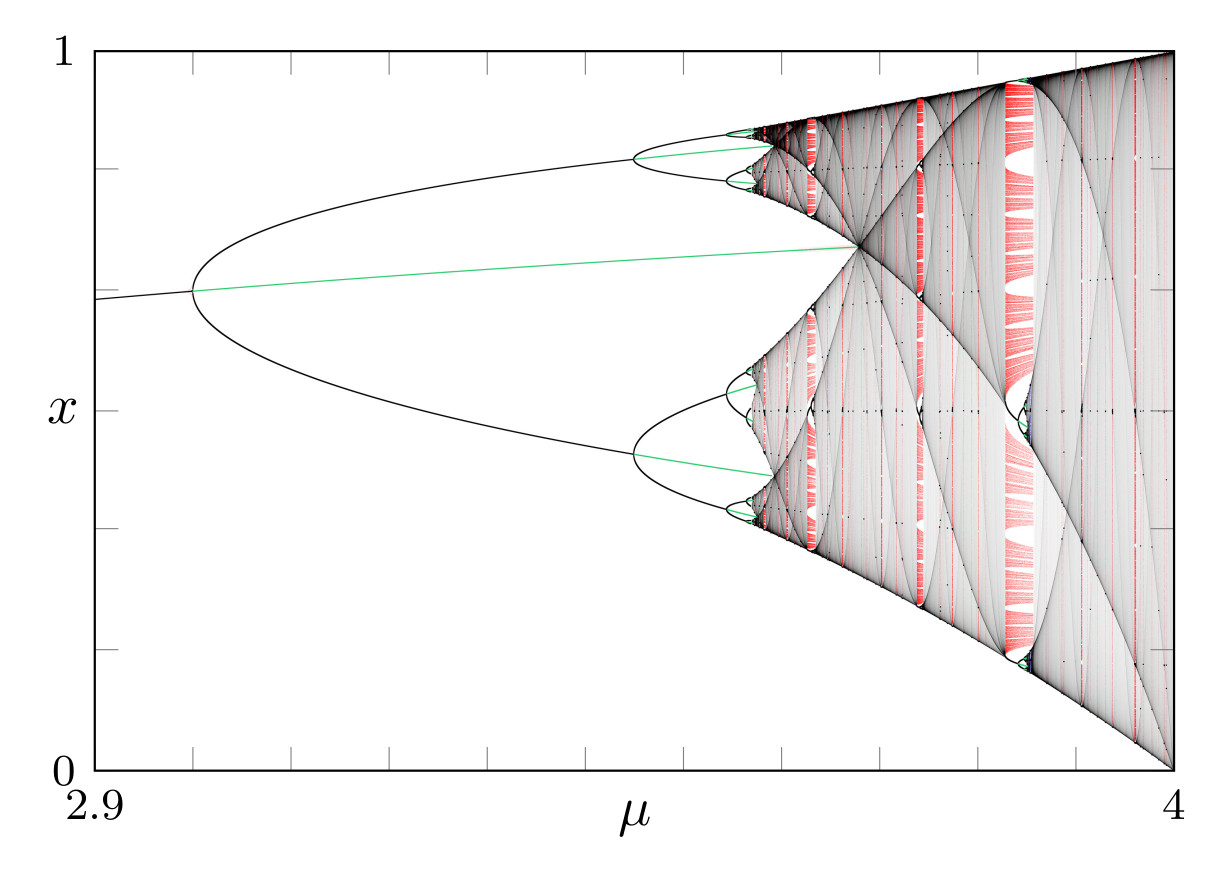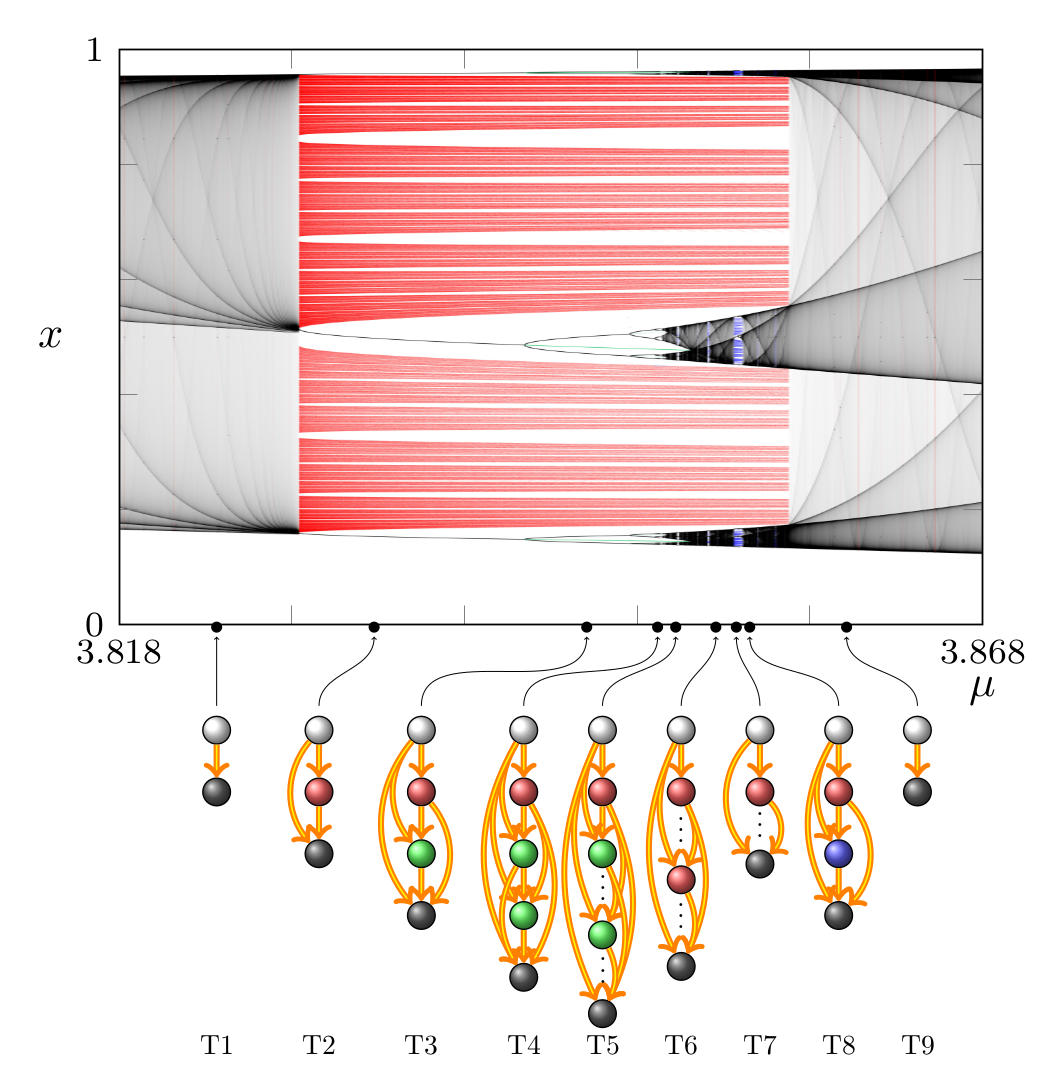Press ? for presentation controls.
Best viewed in Firefox,
Chrome and
Opera.
Infinite towers
in the graph
of a Dynamical System
Roberto De Leo
Howard University
Washington, DC (USA)
Joint work with Jim Yorke
The logistic map

|
|
Bifurcation diagram of the logistic map
- Periodic orbit
- Feigenbaum attractor
- Cycle of intervals (chaotic)
- Beginning of a window
- End of a window

Bifurcation diagram of the logistic map
Periodic orbit Cantor set
(subshift of finite type)

L. Jonker
D. Rand
S. van Strien
J. Guckenheimer
M. Lyubich
A. Blokh
+
C. Conley
The period-3 window of the logistic map

Theorem [Conley '76, Norton '95]
Each discrete dynamical system $f:X\to X$ on a compact metric space $X$
has a Lyapunov function.
or
Theorem [J. Yorke & RdL, 2021]
The graph of the logistic map
is a tower,
namely there is an edge
between each pair of nodes.
The Lorenz system
$$ \left\{ \begin{array}{@{}l@{}} \dot x&=-\sigma x+\sigma y\cr \dot y&=-xz+rx-y\cr \dot z&=\phantom{-}xy-bz\cr \end{array} \right. $$
For $r>1$, the Lorenz system has three fixed points:
the origin and the points
$$
C_\pm=(\pm\sqrt{b(r-1)},\pm\sqrt{b(r-1)},r-1).
$$
On the plane $z=r-1$, solutions passing close to $C_\pm$ will return and cut again the plane nearby $C_\pm$ and so on, so we can define on that plane a Poincaré map.
Bifurcation diagram of the Lorenz system
Projection on the $(y,r)$ plane of the attracting nodes
A period-3 window of the Lorenz system

References
Discrete & Continuous Dynamical Systems, 41:11 (2021) Jim Yorke, RdL, "Infinite towers in the graphs of many dynamical systems",
Nonlinear Dynamics, 105 (2021)